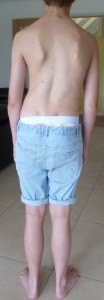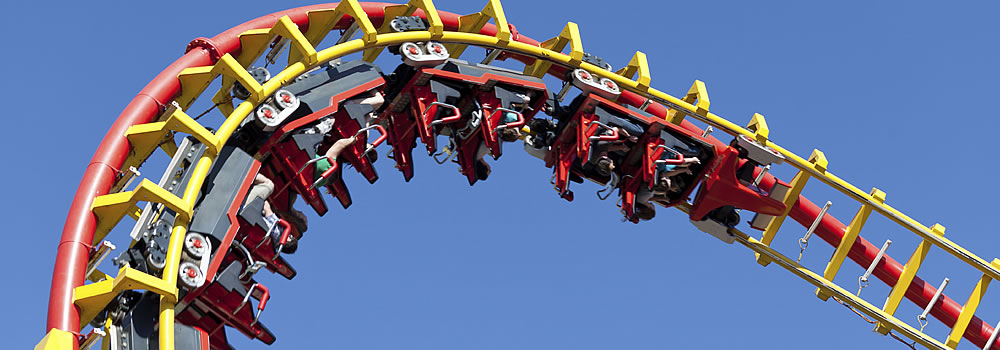This was my first question to the physio we saw about Chris’s shoulder pain. She advised us that he had Scoliosis – and I had never heard of it! I now know a huge amount more than I did on that first day and this is what I have learned.
Scoliosis means lateral curvature and twisting of the spine. The spine develops into a curved shape – typically an S or C shape. As the spine curves to the side, so the individual vertebrae twist and rotate and because the ribs are attached to the vertebrae, this causes a ‘hump’ or ‘rib hump’ on one side of the back.
It also causes the shoulders to become uneven, with one shoulder appearing higher than the other, or one shoulder blade sticking out further from the back – something the physio called ‘Winging’. The waist is also typically uneven, curved on one side and straight on the other.
This image shows my son’s spine when he was first diagnosed. He has what is called AIS – Adolescent Idiopathic Scoliosis. This simply means that the Scoliosis developed during his adolescent years and the cause is unknown (idiopathic).
Adolescent Idiopathic Scoliosis:
About 80-90% of Scoliosis cases fall into this category. It is then split further depending on the age at which the Scoliosis develops.
- Infantile: children under 3 years old
- Juvenile: 3-9 years old
- Adolescent: 10-18 years old
Scoliosis is also more common in girls than boys and it is estimated that about 20 in every 1,000 young people will develop a Scoliosis. I was shocked by this figure – that’s 10 in every 500, or 1 in every 50. And yet the majority of people I speak to, like me, have never heard of it.
The real difficulty I have discovered with Scoliosis is that no two cases are ever the same. There are such a wide variety of types depending on the following variables:
- the location of the curve/s
- the size or magnitude of the curve/s
- the overall shape of the curve/s
- the degree of rotation and rib hump
- the occurrence of front-to-back curves – kyphosis, lordosis or flat back
With Scoliosis the muscles are strong and well developed on one side of the spine, but weak and under used on the other. This is what starts the asymmetry of the spine and over time the strong muscles become stronger and the weak muscles weaker. With the right exercises you can teach those strong, dominant muscles to reduce their work load and allow the weaker muscles to engage and strengthen restoring balance on either side of the spine. In effect you have to re-educate your muscles, encouraging the weaker side to work harder as the strong side does less.
